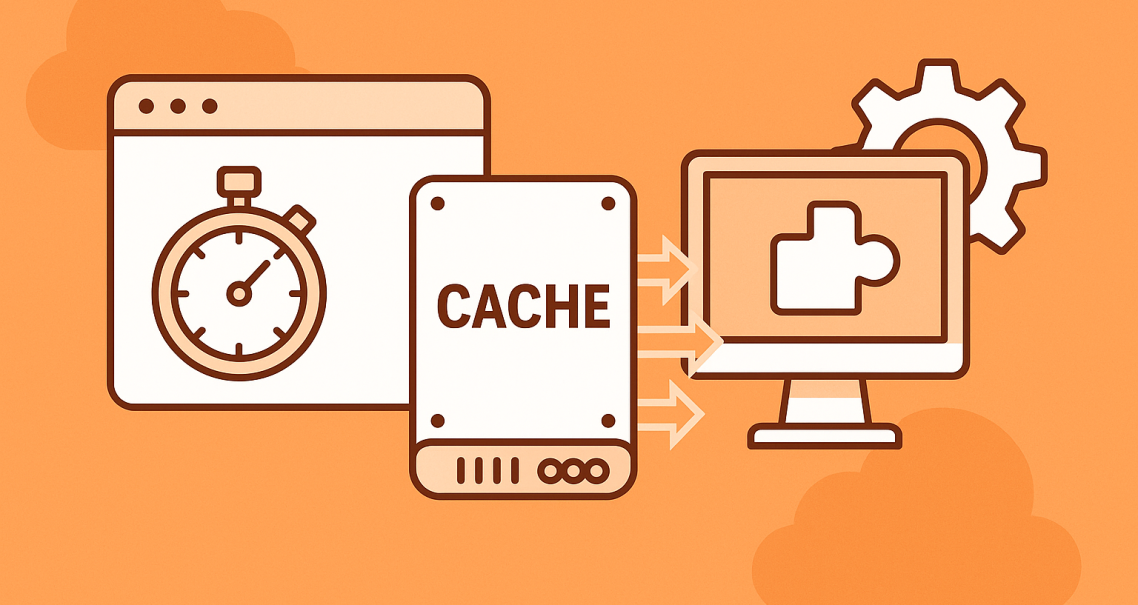
Caching 101: Server-Side vs Client-Side and Choosing Plugins Wisely
If you want a faster WordPress site, caching is one of the most powerful tools you can use. It reduces the amount of work your server does for every request and delivers pages more quickly to visitors. The challenge is that caching comes in many forms, and WordPress offers dozens of plugins that promise to speed things up.
This article breaks caching down in plain language. You’ll learn the difference between server-side and plugin-based caching, how popular tools compare, and the best practices that prevent common mistakes.
What is Caching, Really?
When someone visits your site, WordPress normally builds the page from scratch. It pulls content from the database, runs PHP, and loads all your CSS and JavaScript. This takes time and uses server resources.
Caching saves a ready-made version of the page so it can be served instantly on the next request. There are different types:
-
Page caching: Stores entire HTML pages.
-
Object caching: Saves database query results in memory.
-
Opcode caching: Keeps compiled PHP code ready for reuse.
-
Database caching: Reduces repeated queries.
Server-Side Caching
Server-side caching happens before WordPress even runs. This is the most efficient form of caching because it bypasses PHP altogether.
-
Nginx FastCGI Cache stores static versions of pages directly at the server.
-
Varnish acts as a reverse proxy, sitting in front of the server to cache responses.
-
LiteSpeed Cache integrates tightly with LiteSpeed servers, offering page and object caching.
These methods are extremely fast, but they depend on your hosting environment. Many managed WordPress hosts include them automatically.
WordPress Caching Plugins
If your host doesn’t provide caching, or you want more control, plugins fill the gap. The most popular include:
-
WP Rocket: Paid, all-in-one with caching, file optimization, and lazy loading.
-
FlyingPress: Focuses on speed with preloading, script deferral, and image optimization.
-
LiteSpeed Cache: Free, but requires a LiteSpeed server to unlock full power.
-
W3 Total Cache: Feature-rich, but often overwhelming to configure.
-
Cache Enabler: Lightweight, simple HTML caching.
The right choice depends on your host and needs. There’s no single “best” plugin, but WP Rocket and FlyingPress are reliable options for most sites.
Supporting Tools for Optimization
Caching plugins often work best when paired with additional tools:
-
Perfmatters: Lets you disable scripts on specific pages, reducing bloat.
-
Flying Scripts: Helps delay third-party scripts.
-
Asset CleanUp: Allows fine-grained control over CSS and JS loading.
These are not replacements for caching but help reduce what needs to be cached in the first place.
Best Practices for Caching
While caching sounds simple, misusing it can cause problems. Follow these principles:
-
Use one caching solution: Don’t stack multiple caching plugins. They can conflict and cause errors.
-
Pair with object caching: If available, enable Redis or Memcached for dynamic data.
-
Purge cache when updating content: Outdated cached versions can confuse visitors.
-
Set cache lifespan appropriately: Too short and the cache refreshes constantly, too long and updates take time to appear.
Leveraging CDNs and Edge Caching
Caching isn’t just about your server. A Content Delivery Network (CDN) stores cached versions of your assets on servers worldwide. This reduces distance and speeds up delivery.
Cloudflare’s Automatic Platform Optimization (APO) takes it further by caching full WordPress pages at the edge, making sites load quickly even when the origin server is slow. Combining APO with a plugin like WP Rocket or LiteSpeed Cache gives excellent results.
When Caching Isn’t Enough
Caching can’t fix everything. If your server is underpowered or your site is overloaded with scripts and images, performance will still suffer. Use caching as part of a broader optimization strategy that includes image compression, plugin cleanup, and database tuning.
Caching is one of the easiest and most effective ways to make WordPress faster. Server-side caching provides the biggest performance boost, but plugin-based solutions work well when configured correctly.
Choose one caching tool, keep it simple, and combine it with a CDN for global delivery. Avoid stacking multiple plugins, and always test after changes. With a clear caching setup, your WordPress site will not only load faster but also handle more visitors without breaking a sweat.



